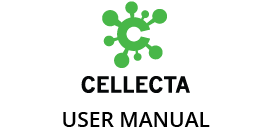Multiple open-source software are available to identify pairings for TCR alpha and beta chains or BCR heavy and light chains from bulk loading of 96-well plates. The following tools have been published and are available online:
Once alignment has been completed, the exported clonotype tables from MIXCR are used as input to the tools indicated above. The installation and analysis procedures can be found on each software’s GitHub page. Note that the operating system and package installation requirements can differ for each software.
| Tools | Published year | Publication | Github |
|---|---|---|---|
| ALPHABETR | 2017 | Identifying T Cell Receptors from High-Throughput Sequencing: Dealing with Promiscuity in TCRα and TCRβ Pairing | link |
| MAD-HYPE | 2019 | A Bayesian framework for high-throughput T cell receptor pairing |
link |
| T-SHELL | 2024 | TIRTL-seq: Deep, quantitative, and affordable paired TCR repertoire sequencing | link |
Each of these software uses the co-occurrence of TCRα and TCRβ chains in 96-well plates. Frequentist or Bayesian statistics is used to pair the receptor chains confidently. Highly co-occurring chains are assigned the most likely true receptor pairs. Each of these software programs has its unique advantages:
- ALPHABETR can identify complex pairings that include TCRαs that have the same TCRβ chain or cells that contain one unique TCRβ and two TCRαs.
- MAD-HYPE uses Bayesian statistics to identify highly confident pairings.
- T-SHELL considers the usage of co-occurrence and the correlation of the read counts belonging to the receptor sequences.
Depending on the sample type and number of wells used for analysis, loading ~100 cells per well can yield somewhere between dozens to hundreds of pairings. Experiments that use more than 1 plate (i.e.,> 96 wells) for one sample source can even yield a greater number of pairings.
Need more help with this?
Contact Us

